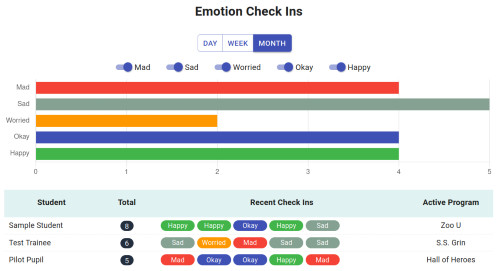Categories of Emotions
The list of emotions a typical young child understands may be limited to happy, mad, sad, and scared (Harter, S., & Buddin, B. J.); however, as the child grows, the list expands, and they develop a more nuanced vocabulary to describe their feelings.
Over the past 40 years, several frameworks have emerged to describe and categorize emotions. Among these are the Plutchik Wheel of Emotions and Ekmans’ Atlas of Emotions. For this article, we will focus on a tree-like framework created by Dr. Phillip Shaver and his colleagues at the University of Denver.
In 1987, Shaver and his colleagues published Emotion Knowledge: Further Exploration of a Prototype Approach, where they outlined a three-level hierarchy of emotions and categorized words within that hierarchy. In the paper, they identified six primary emotions: Anger, Fear, Joy, Love, Sadness, and Surprise. Additionally, they identified 25 secondary emotions and 135 words representing more descriptive tertiary emotions.
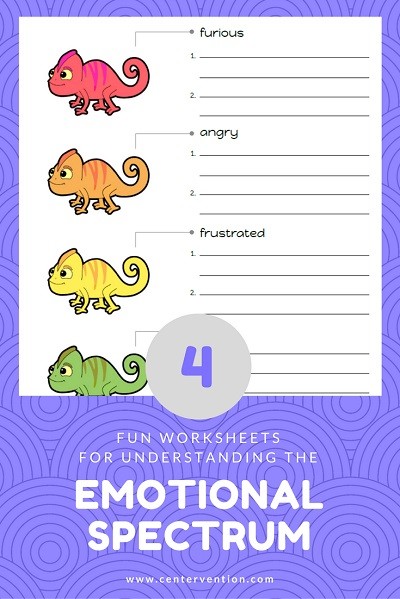
Here is the complete list of emotions and how they are categorized:
- Anger
- Disgust: Contempt, disgust, revulsion
- Envy: Envy, jealousy
- Exasperation: Exasperation, frustration
- Irritation: Aggravation, agitation, annoyance, grouchiness, grumpiness, irritation
- Rage: Anger, bitterness, dislike, ferocity, fury, hate, hostility, loathing, outrage, rage, resentment, scorn, spite, vengefulness, wrath
- Torment: Torment
- Fear
- Horror: Alarm, fear, fright, horror, hysteria, mortification, panic, shock, terror
- Nervousness: Anxiety, apprehension, distress, dread, nervousness, tenseness, uneasiness, worry
- Joy
- Cheerfulness: Amusement, bliss, cheerfulness, delight, ecstasy, elation, enjoyment, euphoria, gaiety, gladness, glee, happiness, jolliness, joviality, joy, jubilation, satisfaction
- Contentment: Contentment, pleasure
- Enthrallment: Enthrallment, rapture
- Optimism: Eagerness, hope, optimism
- Pride: Pride, triumph
- Relief: Relief
- Zest: Enthusiasm, excitement, exhilaration, thrill, zeal, zest
- Love
- Affection: Adoration, affection, attraction, caring, compassion, fondness, liking, love, sentimentality, tenderness
- Longing: Longing
- Lust: Arousal, desire, infatuation, lust, passion
- Sadness
- Disappointment: Disappointment, dismay, displeasure
- Neglect: Alienation, defeat, dejection, embarrassment, homesickness, humiliation, insecurity, isolation, insult, loneliness, neglect, rejection
- Sadness: Depression, despair, gloom, glumness, grief, hopelessness, melancholy, misery, sadness, sorrow, unhappiness, woe
- Shame: Guilt, regret, remorse, shame
- Suffering: Agony, anguish, hurt, suffering
- Sympathy: Pity, sympathy
- Surprise
- Surprise: Amazement, astonishment, surprise
Teaching Emotional Literacy
Featured Lessons
To assist you as you help students understand and manage their emotions, we have created a series of supplemental lessons, activities, and worksheets. Many of these include characters and scenarios from our online SEL interventions. While you aren’t required to use our online programs in order to use these supplemental resources, you can request a Free Trial here.

Emotional Spectrum
It’s important that students learn to identify the degree of emotion they are feeling and use words that are more descriptive than mad, sad, happy, etc.
In these worksheets, students will read emotion words that describe the range of one emotion and identify situations that make them feel that way.
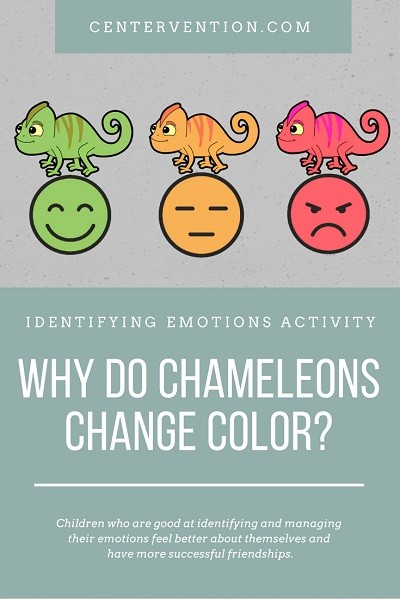
Identifying Emotions Activity
Identifying and managing feelings requires that we respond to emotional situations in a socially acceptable manner, and research shows that children who are good at identifying and managing their emotions feel better about themselves and have more successful friendships.
This identifying emotions activity will students learn to recognize the physical signs associated with different emotions.
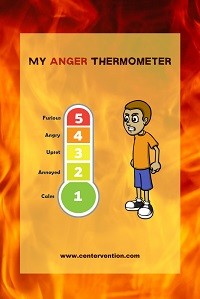
Anger Thermometer
Everyone feels angry from time to time, and it can be an overwhelming emotion. And like other emotions, anger comes in different strengths or degrees.
Using this anger thermometer worksheet, students will reflect on situations where they feel angry and brainstorm ideas for how to calm down.
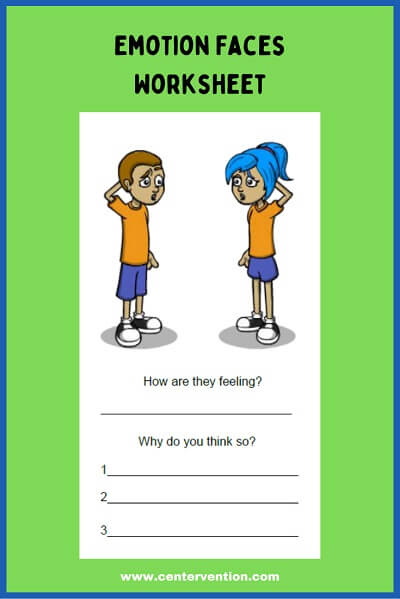
Emotion Faces
These emotion faces worksheets will help your students evaluate facial expressions and associate those expressions with a range of emotions.
In the lesson, we use characters from our online SEL game, Adventures Aboard the SS GRIN to illustrate the following feelings: angry, anxious, bored, confused, happy, impatient, sad, scared, and surprised.
Additional Emotional Literacy Lessons and Activities
- Feelings Wheel: A daily check in to help you understand how your students are feeling
- The Worry Scale: Coping strategies for anxiety, worry, and fear
- Feelings Faces: A free match the emojis printable
- Charades: An emotion identification activity based on the game, Charades
- Telephone Game: Recognizing facial expressions and body language
Lesson Extension When Using Centervention Online Programs
Each day, when a student log in to their online Centervention account, they will be asked how they are feeling. They can select one of the following five options: Mad, Sad, Worried, Okay, Happy.
All of these student emotion check ins are recorded and displayed in your educator dashboard where you can determine, at a glance, which students may need additional support.
And for those students that need additional support, there are 6 scenes in Zoo U and 3 scenes in Zoo Academy that have a primary focus on Emotion Regulation.
